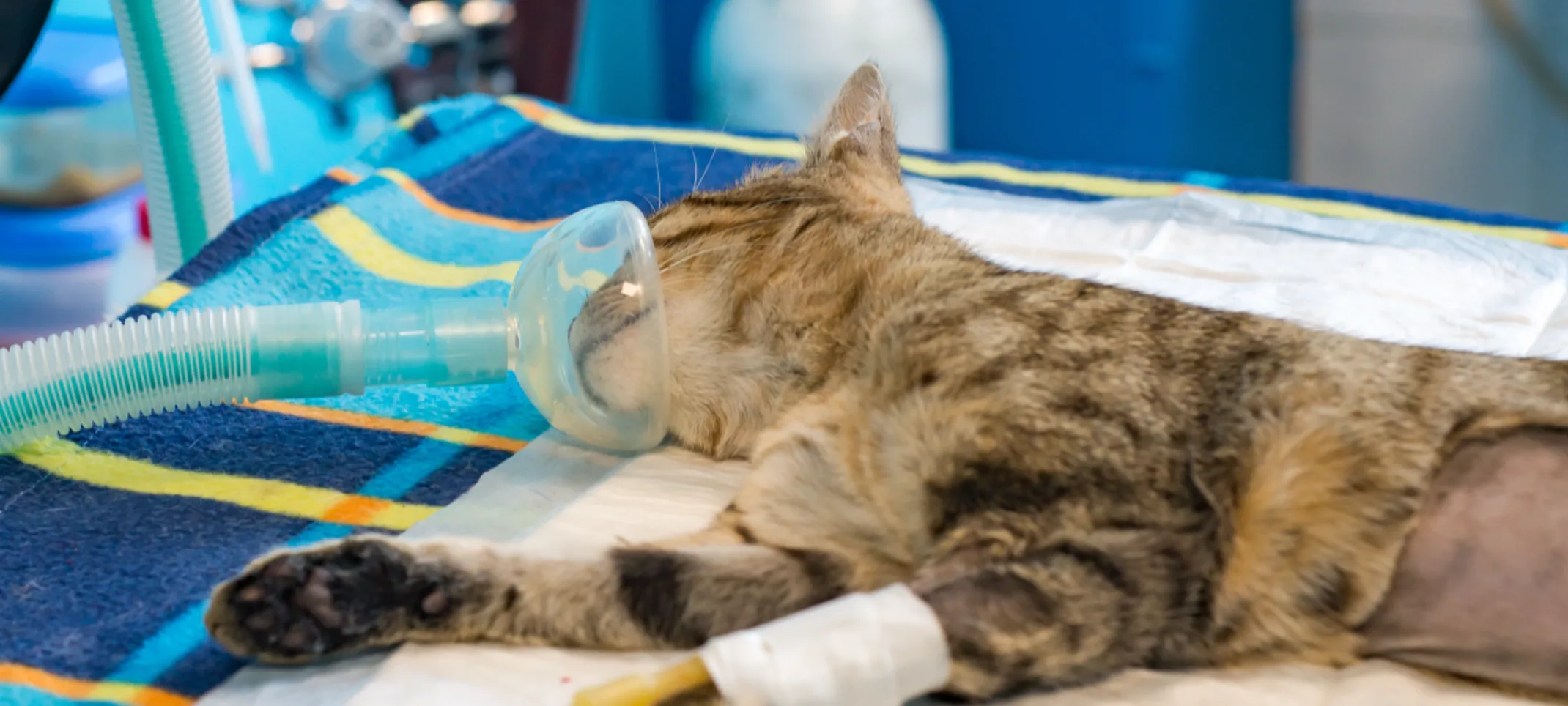Southfort Veterinary Clinic
Surgery Overview
We have our veterinarians operating as a dedicated registered veterinary technician who provides anesthetic monitoring and an experienced assistant stands by for any additional needs your pet may have.

Surgical Procedures Offered
Southfort Veterinary Clinic maintains a state-of-the-art surgical suite equipped for many types of surgeries from a routine spay or neuter to an emergency C-section or Foreign Body procedure.
Routine Surgery
Feline Spay & Neuter
Canine Spay & Neuter
Rabbit Spay & Neuter
Dental Cleaning & Extractions
Lump Removal
Urgent/ Emergency Surgery
Porcupine Quill Removal
Exploratory & Foreign Body Removal
C-Section & Pyometra
Urinary Blockages & Stone Removal
Laceration & Wound Repair
Other Surgeries
Fracture Repair
Cruciate Rupture Repair
Various Ophthalmic Surgeries (Enucleation, Entropion, Cherry Eye Repair, Grid Keratotomy)
Hernia Repair
Prior to Surgery
When your pet is scheduled for surgery, we call our clients to confirm pre-surgical care and at-home instructions prior to the next morning's drop-off. Drop-off time is between 8 am-8:30 am Monday - Friday.
Fasting
We advise a 12-hour fasting period from 8 pm the night before surgery for all food. Our patients are fasted for several reasons prior to the anesthetic. First, it is a safety concern. Our patients are intubated with an Endotracheal Tube (ET tube) that is placed in the trachea or windpipe in order for us to deliver anesthetic gas for maintained anesthesia. During sedation, placement of the tube, or removal of the tube there is always a possibility of the pet 'coughing up' a small amount of vomitus. While we always do our best to choose the right size ET tube and inflate a small cuff on the tube to ensure a complete seal is formed, there is still a very small chance that the pet may aspirate. For that extra step to protect your pets we ask that they all be fasted prior to their procedures. Another reason we recommend fasting because anesthetics have been known to cause nausea and vomiting. A visit to the vet can be stressful enough as it is, the last thing we want is for a pet to feel 'sick' while in the clinic. We also want to make sure that the stress doesn't lead to a mess in your car going to or from the clinic.
Exercise
It is important for your pet to get a good amount of exercise before coming into the clinic for their procedure. Remember, your pets will be housed in a kennel for the majority of the day with us, and then will likely be confined to strict rest for 10-14 days after the procedure. Giving them a good run or some extra playtime before coming in can help decrease their stress level while they are with us for the day, and help tire them out so they are more receptive to their sedatives, making the anesthetic procedure easier on them. It can also help you keep them quiet when they get home since they won't be able to run or play afterward.
Bathroom Breaks
Since our drop-off time is so early in the morning, many people forget to give their pets the opportunity to use the 'little pets room' before they come in. This is so important for our pets. Often, animals in a stressful situation will hold the bladder or bowel, particularly cats. The longer stool sits in the colon the more likely it is your pet will end up with diarrhea. Not only is it uncomfortable for the animal, but that discomfort also adds to stress for them. Since an animal is not able to bathe for 2 weeks (until the incision is healed), making sure they have gone to the bathroom and are nice and clean before their surgery will help make things easier for you while they recover. Since you can't take your cat for a walk before coming in, a good rule of thumb is to encourage 30 minutes of play before leaving for your appointment. This should encourage a bathroom break for your cat before you come into the clinic.
After Surgery & At Home Care
Pets come home from surgery slightly sedated. It can take a full 24 hours for the medications to completely leave the system so this is not uncommon. When you come to pick up your pet, you will get an information package going over everything to expect and watch out for with your individual pet's needs. Here are a few of the key points to keep in mind for any post-surgical case. The Cone of Shame
An Elizabethan collar or cone as it is more commonly referred to is placed on our pets who have a drain or incision that needs to be protected. While many pets find it uncomfortable at first, the brain adjusts to new dimensions after 3 days. So long as the cone is left on, your pet will actually learn to ignore it after the 72-hour period. A cone is measured to come out 1 inch past the nose so that when pushed back to the shoulders the animal can eat and drink normally without being able to reach the incision. So long as the food and water dishes are pulled away from the wall and are not sitting in a raised feeder, your pet will still be able to eat and drink. It is incredibly important that the cone be left on as many complications can occur if a pet is able to reach the incision site such as infection and removal of sutures. Another benefit to the cone is it can help keep your pet quiet during the 2 week rest period. Animals are much less likely to try jumping or playing with the cone on.
Restricted Exercise
Animals who have undergone a surgical procedure should be kept quiet for 10-14 days after their procedure. This is how long it takes for significant tissue healing to occur. Running and certain activities like jumping apply a large amount of pressure to both the internal and external sutures of the incision. A surgical site is closed with multiple layers of suture and if an animal manages to 'pop' a suture they may require additional surgery to repair the damage. While it is incredibly rare for internal bleeding to occur, it is much more likely in cases of animals who are quite an active post-op.
Incision Care
The best care is preventative care when it comes to our recovering pets. Since they can't tell us if something is wrong, it is up to us as owners to keep a close eye on them as they recover. The incision will need to be kept clean and dry for 2 weeks following the surgery. Since the best way to treat an infection is to prevent one from happening, keeping the cone on your pet at all times, keeping the area clean and dry, and checking it twice daily for any redness, swelling, or discharge are all important rules to follow. Make sure not to bathe your pets until the incision is completely healed to ensure no water or soap gets into the area to cause infection or irritation to the raw tissues. If you need to get your dog groomed, it is best to do so prior to coming in for the procedure.
